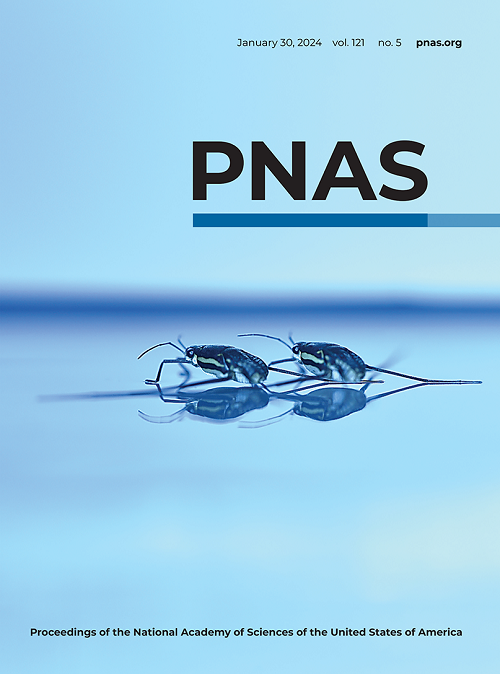Structural basis of the cysteinyl leukotriene receptor type 2 activation by LTD4
IF 9.4
1区 综合性期刊
Q1 MULTIDISCIPLINARY SCIENCES
Proceedings of the National Academy of Sciences of the United States of America
Pub Date : 2025-04-07
DOI:10.1073/pnas.2417148122
引用次数: 0
Abstract
The G protein–coupled cysteinyl leukotriene receptor CysLT2R plays intricate roles in the physiology and pathogenesis of inflammation-related processes. It has garnered increasing attention as a potential therapeutic target for atopic asthma, brain injury, central nervous system disorders, and various types of cancer. In this study, we present the cryo-electron microscopy structure of the cysteinyl leukotriene D4 (LTD4)-bound human CysLT2R in complex with a Gα求助全文
约1分钟内获得全文
求助全文
来源期刊
CiteScore
19.00
自引率
0.90%
发文量
3575
审稿时长
2.5 months
期刊介绍:
The Proceedings of the National Academy of Sciences (PNAS), a peer-reviewed journal of the National Academy of Sciences (NAS), serves as an authoritative source for high-impact, original research across the biological, physical, and social sciences. With a global scope, the journal welcomes submissions from researchers worldwide, making it an inclusive platform for advancing scientific knowledge.

 求助内容:
求助内容: 应助结果提醒方式:
应助结果提醒方式:


